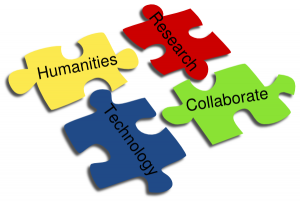SHTEM: Humanities Meets Engineering
 If you’re a teacher in these times, you hear early and often that STEM is what education is now all about. It’s STEM to the brim–more science, technology, engineering & math–and a requiem for Arts and Humanities. Indeed there are so many calls for “more STEM!” and its efficiencies that Monty Python’s song for more Spam seems downright deficient. But this narrow way of thinking isn’t good for education–including the STEM disciplines.
If you’re a teacher in these times, you hear early and often that STEM is what education is now all about. It’s STEM to the brim–more science, technology, engineering & math–and a requiem for Arts and Humanities. Indeed there are so many calls for “more STEM!” and its efficiencies that Monty Python’s song for more Spam seems downright deficient. But this narrow way of thinking isn’t good for education–including the STEM disciplines.
STEM shouldn’t be about Us vs. Them. Our colleagues in the Arts and Art  Education have countered this thinking head on with their acronym STEAM: adding the Arts to power STEM with creativity. I’m on board with this broad-minded approach to learning. And I’ll add SHTEM to the mix: powering STEM with the historical, cultural, and conceptual thinking of the Humanities. It’s a strategic mode of creative thinking that can power future designers, entrepreneurs, and inventors in the STEM professions. It’s a mode of thinking that draws on aesthetics, rhetoric, gender theory, history, and sociology to show students how to tailor their ideas to particular audiences for specific purposes: whether that audience is a governing board, a manufacturer, or a niche market.
Education have countered this thinking head on with their acronym STEAM: adding the Arts to power STEM with creativity. I’m on board with this broad-minded approach to learning. And I’ll add SHTEM to the mix: powering STEM with the historical, cultural, and conceptual thinking of the Humanities. It’s a strategic mode of creative thinking that can power future designers, entrepreneurs, and inventors in the STEM professions. It’s a mode of thinking that draws on aesthetics, rhetoric, gender theory, history, and sociology to show students how to tailor their ideas to particular audiences for specific purposes: whether that audience is a governing board, a manufacturer, or a niche market.
I’m involved in the IMOS initiative here at UF, which brings together faculty in Materials Science Engineering, Anthropology, Classics, English, History, and Sociology in partnership with the Center for the Humanities and the Public Sphere. We’re reinventing freshman education for engineers with our interdisciplinary perspectives and case studies. Engineering students learn the anthropological concept of entanglement, the Classical uses of concrete to create social spaces, the modernist aesthetics of household plastics, the cyborg effects of semiconductors on social relations. And much more! Soon I’ll be joining colleagues from Team IMOS to give a pedagogy workshop for the Materials Research Society meeting in Boston. (We’re funded by MRS and NSF, and had seed money from a UF Creative Campus Catalyst grant.) We’ll show up with plenty of SHTEM, and we look forward to learning from our colleagues in science and engineering. -MB
Comments are currently closed.